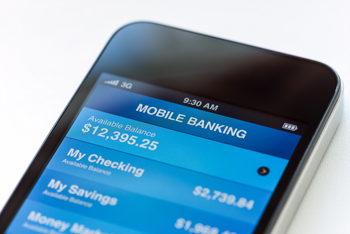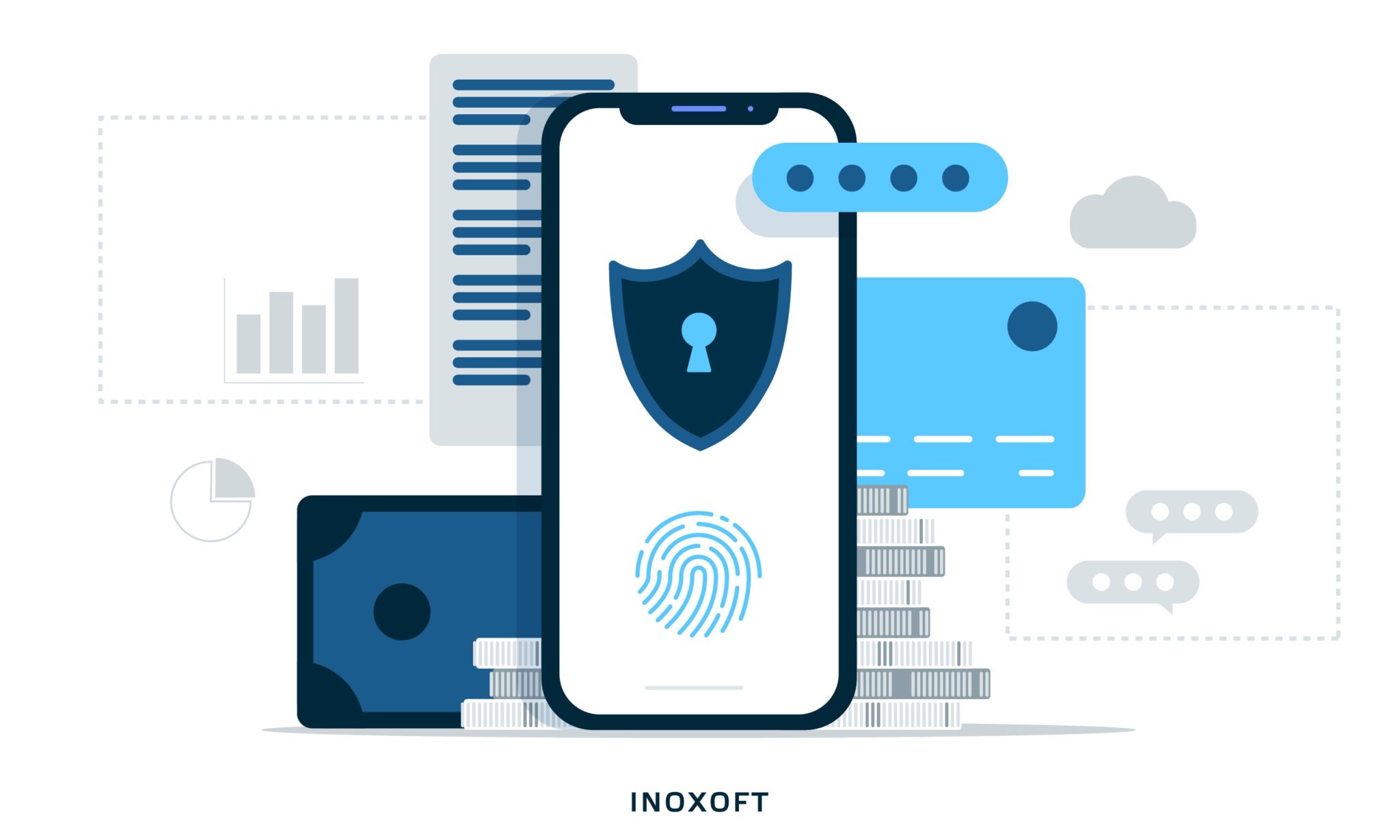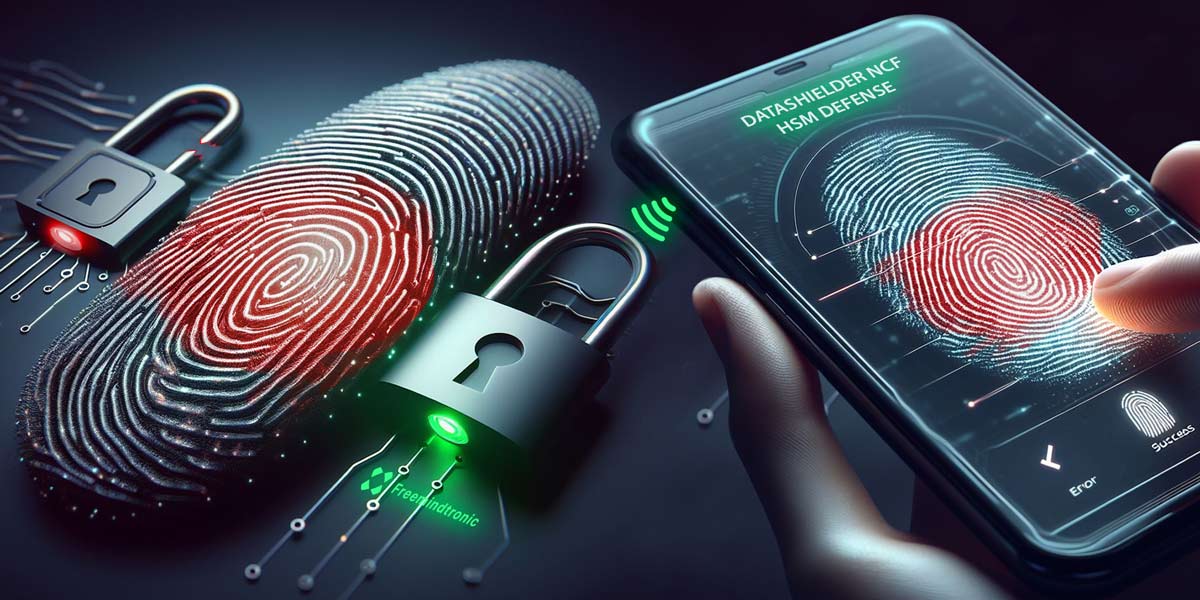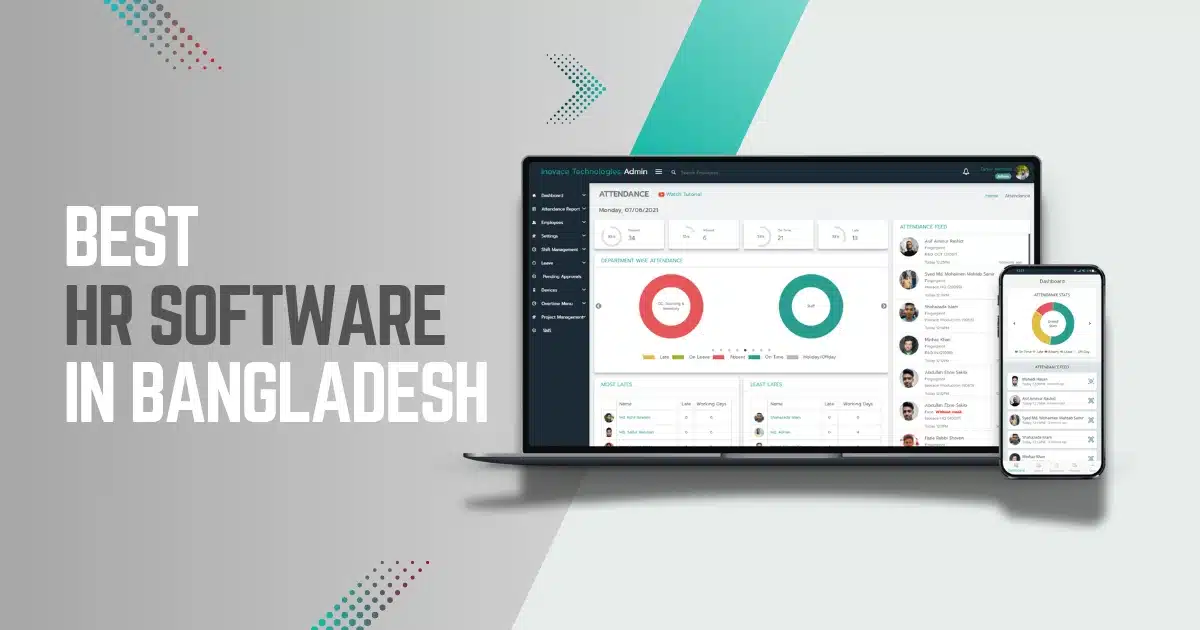Mobile banking is more popular than ever. But security remains a top concern.
Mobile banking biometric security helps protect your financial data. Biometrics uses unique physical features, like fingerprints or facial recognition, to verify your identity. This means only you can access your bank account. No more worrying about stolen passwords. Biometric security is becoming a key feature in mobile banking apps.
It offers a higher level of protection compared to traditional methods. Banks are investing in this technology to keep your money safe. Understanding how this works can help you feel more secure about mobile banking. Let’s explore why biometric security is crucial for preventing fraud in mobile banking apps.
What is Mobile Banking
Mobile Banking Biometric Security is transforming the way we manage our finances. With the rise of mobile banking, securing our financial data is more important than ever. This introduction explores the basics of mobile banking and its significance.
Growth Of Mobile Banking
Mobile banking has seen exponential growth in recent years. More people are using smartphones and tablets to handle their banking needs. Let’s look at some key points about its growth:
- Convenience: Users can access their accounts anytime, anywhere.
- Wide Adoption: Both banks and customers are embracing mobile banking.
- Technological Advancements: New technologies make mobile banking more user-friendly.
According to a recent report, the number of mobile banking users worldwide has increased significantly:
| Year | Mobile Banking Users (Millions) |
|---|---|
| 2019 | 1,200 |
| 2020 | 1,500 |
| 2021 | 1,800 |
| 2022 | 2,100 |
These numbers show a clear upward trend. Mobile banking is becoming a preferred method for many. The convenience and ease of use are driving this growth. Banks are also offering more features to attract mobile users.
Importance Of Security
As mobile banking grows, so does the need for security. Protecting financial data is crucial. Here’s why security is important:
- Preventing Fraud: Secure systems help protect against fraudulent activities.
- Data Protection: Ensures sensitive information remains confidential.
- Building Trust: Customers need to trust their bank’s security measures.
Biometric security methods, like fingerprint and facial recognition, are becoming popular. They offer several benefits:
- Enhanced Security: Biometric data is unique to each individual.
- Ease of Use: Quick and simple authentication process.
- Reduced Risk: Harder for unauthorized users to access accounts.
Let’s look at some common biometric security methods:
| Method | Description |
|---|---|
| Fingerprint | Uses unique fingerprint patterns for authentication. |
| Facial Recognition | Analyzes facial features to verify identity. |
| Voice Recognition | Identifies users based on voice patterns. |
These methods enhance security and provide a seamless user experience. As mobile banking continues to grow, robust security measures are essential.
Biometric Security to Prevent Fraud In Mobile Banking Apps
Mobile banking is becoming more popular every day. With the rise of mobile banking, securing personal and financial information is crucial. One of the most effective ways to enhance security is through biometric security. This method uses unique physical traits to verify identity. In this section, we will explore the basics of biometric security.
What Is Biometric Security?
Biometric security is a method of verifying a person’s identity using their unique physical characteristics. It ensures that only the authorized user can access sensitive information. This technology is based on the fact that everyone has unique biological traits. These traits include fingerprints, facial features, and voice patterns.
Here are some key points about biometric security:
- Accurate Identification: Biometric security provides precise identification. Traditional passwords can be guessed or stolen. Biometrics are unique and hard to replicate.
- Convenience: Users do not need to remember complex passwords. They only need to use their physical traits, which they always have with them.
- Enhanced Security: Biometric data is difficult to fake. This makes it a stronger security measure against fraud and unauthorized access.
Biometric security is especially valuable in mobile banking. It provides a secure and user-friendly way to protect financial data. Users can access their accounts quickly and safely.
Types Of Biometrics Used
Different types of biometrics are used in mobile banking. Each type relies on unique physical or behavioral traits. Here are the most common types:
- Fingerprint Recognition: This is the most common type. It scans the user’s fingerprint to grant access. It is fast and highly accurate.
- Facial Recognition: This method uses the user’s face for identification. The camera captures the face and matches it with the stored data. It is convenient and effective.
- Voice Recognition: This uses the unique patterns in a person’s voice. The user speaks a specific phrase, and the system verifies their identity. It is useful for hands-free authentication.
- Iris Recognition: This scans the unique patterns in the colored part of the eye. It is very accurate but requires special hardware.
Each of these biometrics has its advantages. Fingerprint recognition is quick and easy to use. Facial recognition is convenient and does not require physical contact. Voice recognition allows for hands-free operation. Iris recognition offers high accuracy.
Choosing the right type of biometric depends on various factors. These include user preference, device compatibility, and the level of security needed. Combining multiple biometrics can enhance security even further.
Benefits Of Biometric Security
Mobile banking has changed how we manage our finances. With biometric security, it is now safer and more convenient. Biometrics use unique features like fingerprints and facial recognition for authentication. This offers several benefits, making mobile banking both secure and user-friendly.
Enhanced Security Features
Biometric security provides stronger protection than traditional methods. It uses unique physical traits, which are hard to replicate. This reduces the risk of unauthorized access. Here are some key benefits:
- Unique Identification: Biometric data is unique to each person. This makes it difficult for hackers to break in.
- Reduced Fraud: With biometrics, the chances of fraud decrease. Banks can detect and prevent unauthorized transactions quickly.
- Secure Transactions: Biometric systems ensure that only the account owner can authorize transactions. This adds an extra layer of security.
- Data Protection: Biometric data is stored securely. This ensures that sensitive information remains safe.
Here’s a table comparing traditional security methods with biometric security:
| Security Method | Risk Level | Ease of Use |
|---|---|---|
| Passwords | High | Moderate |
| PIN codes | Medium | High |
| Biometrics | Low | Very High |
User Convenience
Biometric security is not only secure but also convenient. It makes mobile banking easier and faster. Users do not need to remember complex passwords. Instead, they can use their fingerprint or face for quick access. Here are some advantages:
- Quick Access: Users can log in with a simple touch or glance. This saves time and effort.
- Easy to Use: Biometric systems are user-friendly. Even non-tech-savvy users can operate them with ease.
- No Password Management: Users do not need to manage or remember passwords. This reduces the chances of forgotten passwords.
- Seamless Experience: The process is smooth and seamless. Users enjoy a hassle-free banking experience.
Biometric security offers a blend of safety and convenience. It ensures that users can access their accounts quickly and securely. As mobile banking continues to evolve, biometrics will play a vital role in enhancing user experience.

Credit: www.aware.com
Popular Biometric Methods
Mobile banking biometric security is becoming more common. It provides a higher level of protection for users. Popular biometric methods are used to secure mobile banking apps. These methods include fingerprint recognition, facial recognition, and iris scanning. Each method has unique features and benefits.
Fingerprint Recognition
Fingerprint recognition is one of the most widely used biometric methods. It is easy to use and very secure. Users place their finger on a scanner, which reads their unique fingerprint pattern. This method is popular for several reasons:
- Quick and convenient: Users can unlock their mobile banking app in seconds.
- High accuracy: Fingerprints are unique to each person, making it difficult to fake.
- Widely available: Most modern smartphones come with built-in fingerprint scanners.
Fingerprint recognition works by capturing the ridges and valleys of a fingerprint. The scanner creates a digital map of the fingerprint. This map is then compared to the stored fingerprint data. If there is a match, access is granted.
Here is a simple comparison of fingerprint recognition features:
| Feature | Benefit |
|---|---|
| Ease of Use | Simple and fast to use |
| Security | Highly secure due to unique patterns |
| Availability | Common in modern smartphones |
Facial Recognition
Facial recognition is another popular biometric method. It uses the unique features of a person’s face to verify identity. This method is gaining popularity in mobile banking due to its ease of use and security. Key advantages of facial recognition include:
- Hands-free operation: Users simply look at their device to unlock it.
- High security: Advanced algorithms make it hard to spoof.
- Fast authentication: The process takes just a few seconds.
Facial recognition systems work by analyzing various facial features. These include the distance between the eyes, the shape of the nose, and the contour of the jawline. The system captures an image of the face and converts it into a digital code. This code is compared to the stored facial data. If they match, access is granted.
Consider the following features of facial recognition:
| Feature | Benefit |
|---|---|
| Hands-free | Convenient for users |
| Security | High due to complex algorithms |
| Speed | Fast authentication process |
Iris Scanning
Iris scanning is a highly secure biometric method. It uses the unique patterns in the colored part of the eye, called the iris. This method is less common but offers exceptional security. Benefits of iris scanning include:
- Extremely high accuracy: The iris has many unique features.
- Non-invasive: Users simply look at a scanner.
- Suitable for all ages: Iris patterns remain stable throughout life.
Iris scanning works by illuminating the eye with infrared light. This light reveals the intricate patterns in the iris. The scanner captures these patterns and creates a digital map. This map is then compared to the stored iris data. If there is a match, access is granted.
Here are key features of iris scanning:
| Feature | Benefit |
|---|---|
| Accuracy | Extremely high due to unique iris patterns |
| Non-invasive | Simple and comfortable for users |
| Stability | Iris patterns do not change over time |
Challenges In Implementation
Mobile banking biometric security promises enhanced safety and convenience. Yet, its implementation comes with several challenges. These obstacles can hinder the widespread adoption and effectiveness of biometric security in mobile banking. This article delves into two major challenges: privacy concerns and technological limitations.
Privacy Concerns
Privacy is a major issue in biometric security. Collecting and storing biometric data can make users feel uneasy. People are wary of how their data is used and protected.
Biometric data includes:
- Fingerprints
- Face scans
- Voice recognition
These are unique and personal. If this data is compromised, the consequences can be severe. Unlike passwords, biometric data cannot be changed.
Here are some concerns:
| Concern | Description |
|---|---|
| Data Breaches | Hackers can steal biometric data, leading to identity theft. |
| Surveillance | Biometric data can be used for tracking and surveillance without consent. |
| Misuse | Companies may misuse data for purposes other than security. |
Regulations and policies play a crucial role. Governments and organizations must set clear guidelines to protect user data. Users should have control over their biometric data and be informed about its usage.
Technological Limitations
Technology is not perfect. Biometric systems can face several limitations that affect their reliability and accuracy.
Some key limitations include:
- Hardware Issues: Biometric sensors may not work well in all conditions. For example, wet or dirty fingers can affect fingerprint scanners.
- False Positives/Negatives: Biometric systems can sometimes incorrectly accept or reject users. This can lead to unauthorized access or difficulty in accessing accounts.
- Integration Challenges: Integrating biometric security with existing systems can be complex and costly.
Another limitation is the cost. High-quality biometric systems are expensive. This cost can be a barrier for smaller banks and financial institutions.
Also, there is a need for constant updates. As hackers get smarter, biometric systems must evolve. This means regular updates and maintenance, which can be resource-intensive.
To overcome these limitations, banks must invest in advanced technology and skilled personnel. Regular training and updates are essential to keep up with the latest advancements and threats.
Regulatory Compliance
Biometric security in mobile banking is essential for protecting users’ financial data. Regulatory compliance ensures that these systems are safe and trustworthy. Following global standards and local regulations helps banks maintain security and gain customer trust.
Global Standards
Global standards guide the implementation of biometric security in mobile banking. These standards ensure that biometric systems are secure and reliable. Organizations like the International Organization for Standardization (ISO) set these standards.
ISO has several standards for biometric security:
- ISO/IEC 19794: This standard defines how biometric data is stored and transmitted.
- ISO/IEC 30107: This standard provides guidelines for preventing biometric spoofing.
- ISO/IEC 24745: This standard focuses on biometric data protection and privacy.
Following these standards helps banks ensure:
- High-level security for user data
- Interoperability between different biometric systems
- Trust and confidence from users
Compliance with global standards is crucial. It shows that a bank takes security seriously. This boosts customer confidence and helps in risk management.
Local Regulations
Local regulations vary from country to country. Each country sets its own rules for biometric security in mobile banking. These regulations ensure that banks follow best practices.
In the United States, the Federal Financial Institutions Examination Council (FFIEC) provides guidelines. These guidelines include:
- Regular risk assessments
- Strong authentication methods
- Protection of biometric data
In the European Union, the General Data Protection Regulation (GDPR) is crucial. GDPR ensures that biometric data is processed lawfully and transparently. It includes:
- Data minimization
- Consent from users
- Rights to access and delete data
Compliance with local regulations helps banks:
- Avoid legal issues
- Protect customer data
- Maintain a good reputation
Understanding and following local regulations is essential. It ensures that biometric security measures are effective and lawful. This protects both the bank and its customers.
Future Of Biometric Security
Biometric security in mobile banking is evolving rapidly. As technology advances, the future of biometric security looks promising. Enhanced features and innovative solutions aim to protect user data and financial transactions. The focus is on making mobile banking more secure and user-friendly.
Emerging Technologies
Emerging technologies are shaping the future of biometric security in mobile banking. These advancements promise better accuracy and convenience.
Here are some key technologies:
- Facial Recognition: Improved algorithms make facial recognition more reliable. It works even in low light and with different angles.
- Voice Recognition: This technology uses unique voice patterns for authentication. It’s useful for hands-free access.
- Iris Scanning: Iris patterns are unique and difficult to replicate. This makes iris scanning highly secure.
- Behavioral Biometrics: This technology analyzes user behavior. Typing patterns, screen swipes, and device usage help in authentication.
These technologies offer multiple layers of security. They reduce the risk of fraud and unauthorized access. The goal is to make mobile banking safe and easy to use.
Predicted Trends
The future of biometric security in mobile banking is full of exciting trends. These trends focus on enhancing security and user experience.
Some predicted trends include:
- Multi-Modal Biometrics: Combining different biometric methods for stronger security. For example, using both facial and voice recognition.
- AI and Machine Learning: AI helps in improving biometric systems. It learns from user behavior and adapts to new threats.
- Wearable Technology: Devices like smartwatches can use biometrics. They offer an additional layer of security.
- Cloud-Based Biometrics: Storing biometric data on the cloud for easy access and management. Ensures data is secure and always available.
- Regulatory Compliance: New regulations will shape biometric security. Ensuring user data privacy and secure transactions.
These trends show a move towards more integrated and intelligent security systems. The aim is to offer users a seamless and secure banking experience.

Credit: inoxoft.com
Conclusion And Recommendations
Mobile banking biometric security is an important topic for anyone using mobile apps for banking. With the rise of cyber threats, securing banking apps with biometric features like fingerprint scans and facial recognition has become essential. This section covers the conclusion and recommendations to enhance mobile banking security.
Best Practices For Users
Users play a vital role in securing their mobile banking apps. Here are some best practices:
- Enable biometric authentication: Always use fingerprint or facial recognition for logging into your banking app. It adds an extra layer of security compared to passwords.
- Keep your device updated: Regularly update your smartphone’s operating system and apps. Updates often include security patches that protect against vulnerabilities.
- Use strong passwords: Even if you use biometrics, ensure your backup password is strong. Combine letters, numbers, and symbols.
- Monitor your account regularly: Frequently check your bank statements for any suspicious activity. Report any unauthorized transactions immediately.
- Be cautious of public Wi-Fi: Avoid using public Wi-Fi for banking transactions. If necessary, use a secure VPN.
Additionally, educate yourself about phishing attacks. Always verify the authenticity of any communication that requests personal information. Enable notifications for transactions to stay informed about your account activity. These practices can significantly enhance your security.
Advice For Financial Institutions
Financial institutions must prioritize the security of their mobile banking apps. Here are some recommendations:
- Implement multi-factor authentication (MFA): Encourage the use of biometrics combined with other authentication methods. This reduces the risk of unauthorized access.
- Regular security audits: Conduct frequent security assessments to identify and fix vulnerabilities. This ensures that the app remains secure against new threats.
- Educate customers: Provide clear guidelines and tutorials on how to use biometric security features. Make it easy for users to understand the importance and benefits.
- Invest in advanced security technologies: Utilize AI and machine learning to detect and prevent fraud. These technologies can analyze patterns and identify suspicious behavior.
- Offer customer support: Ensure that users can easily contact support if they face security issues. Quick resolution of problems builds trust and confidence.
Furthermore, financial institutions should collaborate with cybersecurity experts. Regular training sessions for staff can also help in staying updated with the latest security practices. By following these recommendations, financial institutions can provide a secure banking environment for their customers.
Frequently Asked Questions
What Is Biometric Security In Mobile Banking?
Biometric security in mobile banking uses unique physical traits like fingerprints and facial recognition. It ensures secure access to banking services.
How Does Biometric Authentication Work?
Biometric authentication captures and stores unique user traits. It matches these traits during login to verify identity and grant access.
Are Biometrics Safe For Mobile Banking?
Yes, biometrics are generally safe. They offer enhanced security by requiring unique physical traits, making unauthorized access difficult.
Can Biometric Data Be Hacked?
While possible, it’s very difficult to hack biometric data. Banks use advanced encryption to protect biometric information.
Conclusion
Biometric security in mobile banking is essential today. It protects sensitive information. Users feel safer with fingerprint and facial recognition. Banks need to stay updated with these technologies. Trust builds between banks and customers. Secure banking ensures peace of mind.
Embrace biometric security for safer transactions. It’s a smart move for everyone involved.








